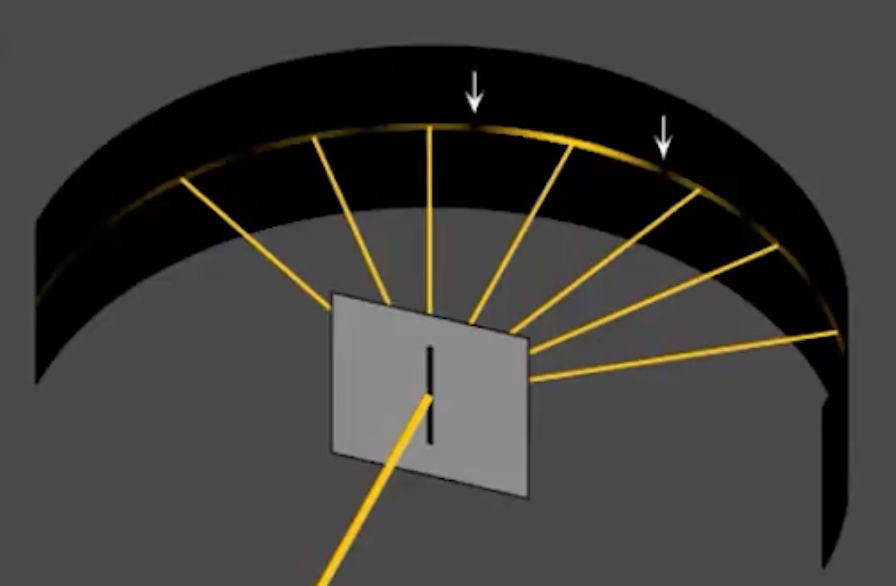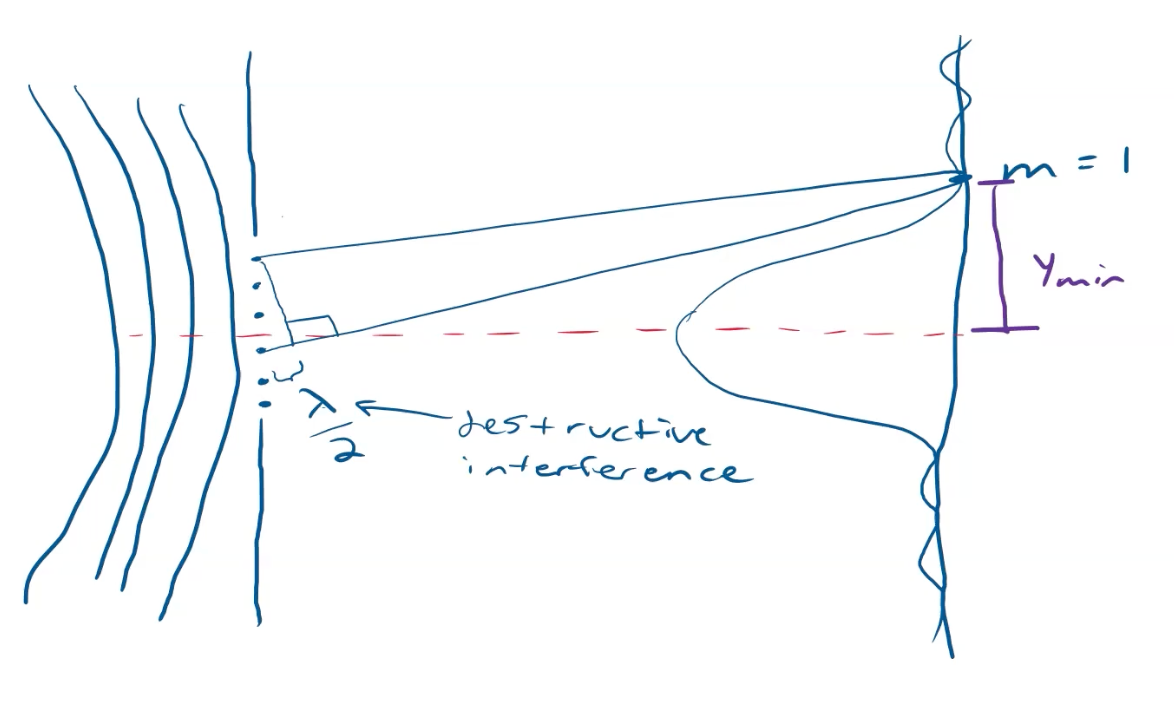Diffraction is the spreading of a wave around the edges of an obstacle or through an obstacle. There are two primary forms of diffraction:
- Fresnel Diffraction (near-field)
- Both the point source and the screen are considerably close
- Fraunhofer Diffraction (far-field):
- The point source and screen are a considerable distance away so all of the lines from the source are far enough to consider the lines parallel. Everything in AP Physics 2 is far-field diffraction
With diffraction, there are both light spots and dark spots created because of constructive and destructive superposition. Below is an example of the spots:

Destructive Interference
Destructive interference is what leads to the dark spots in diffraction. Essentially, two waves will match nodes with antinodes, resulting in dark spots on the surface. Each two pair where the distance is will form a dark spot. This derives the formula: where:
- is the first integer black spot
- is the wavelength
- is the distance between the slit and the screen we are projecting on
- is the aperture (space in the slit)
This shows that the distance between the dark spots is directly related to the wavelength and inversely proportional to the slit width. For example, if the wavelength os doubled through the same slit, the distance between dark spots of doubled wavelength will be the same as the second dark spot (m=2).
